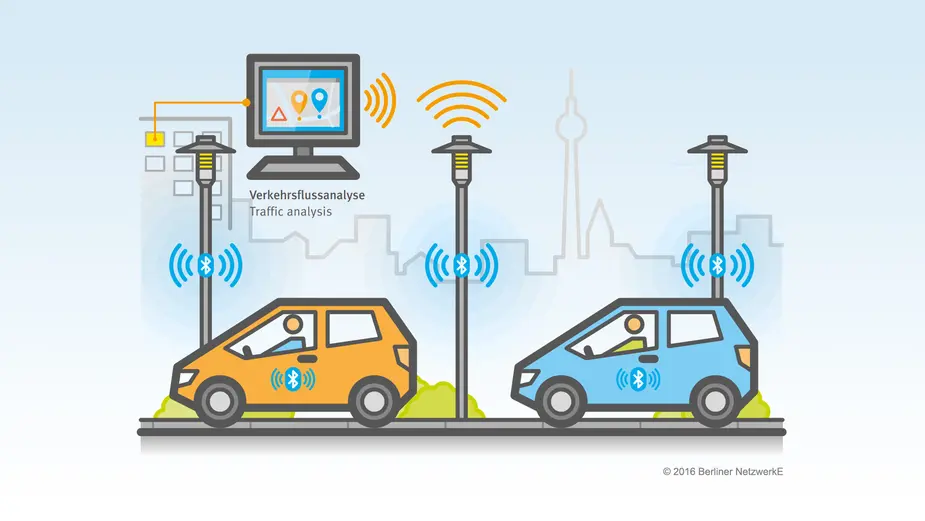A Smarter Kind of Lamp
Street lamps of the future become power-saving multifunctional network nodes
Electrical lighting first came to the capital city in 1882, but it took nearly 50 years before the street lamps were fully electrified in the 1930s. Today, more than 220,000 street lamps light up Berlin at night. The street lamps of the future may surpass their predecessors in function, though. An unprecedented idea is being tested in Adlershof right now: Start-up company ICE Gateway turns common street lamps into power-saving but multifunctional network nodes.
Just like everything else in Adlershof, street lighting must not waste energy. Merely lighting up a street wouldn’t be quite enough for a lamp installed in a high-tech park, of course. Future-proof lighting will come on when necessary, can be adjusted in intensity and duration of use, can be programmed and serviced remotely with an app and will report any operating interferences that it suffers on its own. The street lamps are up to facing new tasks as well: They are to collect data, measure traffic flows and record environmental information, provide the lunch menu of the pizzeria around the corner or point out the free parking place across the street. They offer local information, e.g. for passers-by, ready to be called wirelessly with any device without requiring internet access. New information will be provided at every corner.
Site operator WISTA-MANAGEMENT GMBH and ICE Gateway GmbH, founded in 2013, are cooperating to develop a digital infrastructure network for this. They equip the interior of 160 outdoor lamps with light-emitting diodes and digital components called “gateways” that the young company has developed and built specifically for this purpose. “This solution is special because the sensor data are processed right on site to allow for real-time solutions.” explains Ramin Mokhtari, managing director of ICE Gateway. “For reasons of data privacy, we do not use expensive cameras, instead offering an ‘anonymous’ solution based on ultrasound.” The outer appearance of the street lamps will not be changed.
The light-emitting diodes of the street lamps are also controlled via a gateway, permitting definition of various lighting application scenarios. Lamps can brighten up when a car is parking beneath them or when people are walking past. At the same time, the gateways serve as a platform for a diverse service infrastructure for traffic, parking, logistics or real-time marketing. “Energy savings of up to 80 percent are possible and third parties can be connected via the platform’s open interface. This promises exciting applications,” Simon Hamperl, energy manager of WISTA, enthusiastically explains about the project before adding: “A project with this kind of multi-functionality and at this size is unique in the world so far.”
By Rico Bigelmann for Adlershof Special
